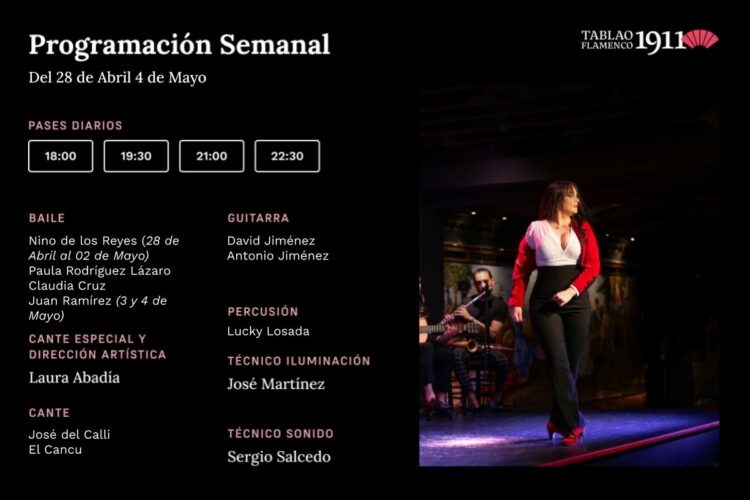
Flamenco Madrid Daily Show
This week, flamenco is lived with strength, elegance, and Cádiz soul on the stage of Tablao 1911.

The Seguiriya is one of the most profound and dramatic palos (styles) of flamenco. Its compás has been used to incorporate into the dance other styles of singing that lack compás, such as the martinetes.
This style is performed by artists when they want to convey a feeling of sorrow through dance, singing or guitar playing. Being a palo that reflects pain, it has a cathartic function in the structure of the flamenco show.
This style is characterized by being identified with specific feelings such as mourning, fatalism, grief or loss by death. Through dance, these feelings are translated and exalted by the singing.
The colors are going to be dark and sober, imitating the mourning that we want to represent. We can observe in the feminine wardrobe the use of dresses or pants, depending on the interpreter. Normally this dance is performed without accessories although, if we want to add difficulty and majesty, we can use a tailed gown and castanets.
When we talk about a classic structure of the dance, we have to take into account that the artists, due to their wide knowledge and technique, can vary it, eliminating, shortening or changing parts of it. In this dance we are going to observe a predominance in the use of the zapateado (or footwork) in harmony with the smooth movement of the arms and the heartbreaking interpretation in the dancer’s gestures. We will observe rhythmic alternations between the guitar and the feet, looking for the different remates of the dance that transmit, together with the singing, a solemn feeling. Depending on the taste of the performer, we can find at the end of the dance the use of another style; the martinete. This palo (or style) is used to conclude the seguiriya dance when we want to create a more imposing moment since it is performed without guitar accompaniment, only the meter, the singing and the dancing.
The origins of this cante can be traced back to the first half of the 19th century, when it was known as playeras. The most widespread theory explains that this name comes from the plañideras; women (mostly gypsies) who were hired to attend a funeral and mourn or sing at it. However, we cannot speak of seguiriyas as a flamenco style until the second half of the 19th century, when they were adapted to flamenco musical codes through contact with other so-called “gypsy” songs. Regarding the dance, we can affirm that it is a recent style since it was created by Vicente Escudero in 1939.
Enjoy!